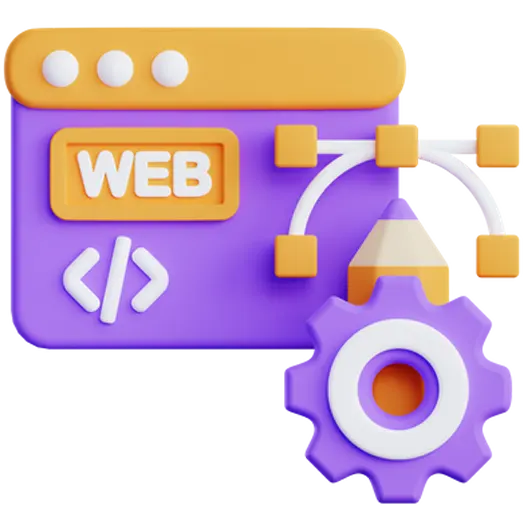
Single Page Applications (SPAs): Weighing the Pros and Cons
Single Page Applications (SPAs) have become increasingly popular in modern web development, offering a dynamic and responsive user experience. But are they the right choice for your project? This article explores the advantages and disadvantages of SPAs, helping you make an informed decision for your website or web application.
Table of Contents
- What is a Single Page Application (SPA)?
- The Pros of Using SPAs
- The Cons of Using SPAs
- Ideal Use Cases for SPAs
- Alternatives to SPAs
- Frequently Asked Questions (FAQs)
- Conclusion
What is a Single Page Application (SPA)?
A Single Page Application is a web application that loads a single HTML page and dynamically updates that page as the user interacts with the application. Unlike traditional multi-page applications, SPAs avoid page reloads, resulting in a smoother and more responsive user experience. Think of Gmail, Google Maps, or Trello – these are all examples of popular SPAs.
The Pros of Using SPAs
SPAs offer several significant advantages over traditional web applications:
Improved Performance and Speed
SPAs only load the necessary data and resources when needed, reducing the amount of data transferred between the client and the server. This results in faster loading times for subsequent interactions, as the browser doesn’t have to reload the entire page for each request.
Enhanced User Experience
The seamless transitions and responsive interactions within SPAs provide a more engaging and intuitive user experience. Users can navigate through the application without the jarring effect of full page reloads, creating a more fluid and enjoyable experience.
Simplified Development and Debugging
SPAs often follow a clear separation of concerns between the front-end and back-end, making development and debugging more manageable. Front-end developers can focus on building the user interface and handling client-side logic, while back-end developers can focus on the API and data management.
Efficient Caching
SPAs can cache data effectively, allowing for offline functionality and further improving performance. Static assets like HTML, CSS, and JavaScript can be cached on the client-side, reducing the need to retrieve them from the server on subsequent visits.
The Cons of Using SPAs
Despite their advantages, SPAs also have some drawbacks that need to be considered:
Search Engine Optimization (SEO) Challenges
Traditionally, search engine crawlers had difficulty indexing SPAs because their content is rendered dynamically using JavaScript. While search engines have improved their ability to crawl SPAs, SEO can still be more complex compared to traditional multi-page applications. Implementing server-side rendering (SSR) or pre-rendering can help mitigate these challenges.
Initial Load Time
SPAs often have a larger initial load time because they need to download the entire application framework and assets before rendering the first page. This can be mitigated through code splitting, lazy loading, and optimizing asset sizes.
Security Concerns
SPAs can be more vulnerable to cross-site scripting (XSS) attacks if not properly secured. It’s crucial to implement robust security measures, such as input validation, output encoding, and using secure coding practices.
JavaScript Dependency
SPAs rely heavily on JavaScript. If JavaScript is disabled or encounters an error, the application may not function correctly. This can be a problem for users with older browsers or accessibility needs. Progressive enhancement techniques can help address this issue.
Ideal Use Cases for SPAs
SPAs are well-suited for applications that require a highly interactive and dynamic user experience, such as:
- Social media platforms
- Dashboard applications
- E-commerce websites with complex interactions
- Web-based email clients
- Collaborative tools
Alternatives to SPAs
If SPAs aren’t the right fit for your project, consider these alternatives:
- Multi-Page Applications (MPAs): Traditional web applications with separate HTML pages for each section.
- Progressive Web Apps (PWAs): Web applications that combine the best of web and native app features.
- Static Site Generators (SSGs): Tools that generate static HTML files from templates and data.
Frequently Asked Questions (FAQs)
- Q: Are SPAs always better than MPAs?
- A: No, it depends on the specific project requirements. SPAs are better for highly interactive applications, while MPAs may be more suitable for content-heavy websites with simple interactions.
- Q: How can I improve the SEO of my SPA?
- A: Implement server-side rendering (SSR) or pre-rendering, optimize your JavaScript code, and ensure your website is mobile-friendly.
- Q: What are the most popular frameworks for building SPAs?
- A: Some of the most popular frameworks include React, Angular, and Vue.js.
- Q: Is it expensive to build an SPA?
- A: The cost depends on the complexity of the application and the development team’s expertise. However, the long-term benefits of improved performance and user experience can often outweigh the initial investment. Remember, as we like to say at Doterb, “Digital transformation is not an option, it’s a necessity to stay relevant.”
Conclusion
Single Page Applications offer a compelling approach to web development, providing a dynamic and responsive user experience. However, it’s crucial to weigh the pros and cons carefully and consider your specific project requirements before deciding if an SPA is the right choice. Understanding the challenges and benefits will help you make an informed decision and build a successful web application.
If your business needs an efficient website or digital system, contact the Doterb team today. We can help you assess your needs and determine the best approach for your project, whether it’s an SPA, MPA, or another solution.
